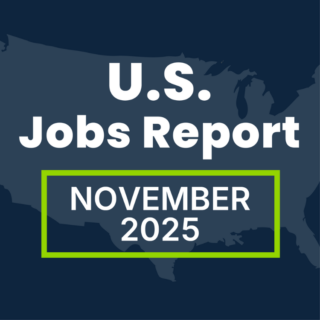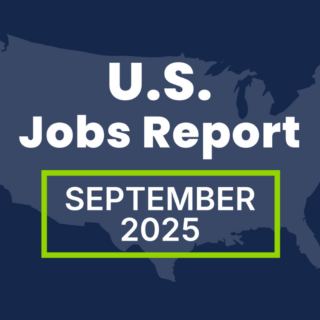Some companies see their RPO provider as only a vendor, but taking a partnership mindset creates a more satisfying, successful working relationship. Working well together as a united front always makes for an easier, smoother rollout with a new RPO program.
The implementation and transition phases before and after a rollout are crucial, as this is when you set the tone and expectations for all involved. It’s also when certain issues need to be addressed and configured.
Recruitment process outsourcing (RPO) has evolved significantly over the past few years. Here are some key areas talent acquisition leaders should focus on when implementing a new RPO program:
1. Identify Key Players Early in the Process
During the transition, one of the most important steps is to establish one key champion within your business. This person is your internal point of contact for RPO with the power to get things. There’s often a lengthy checklist of tasks that need to be completed before a rollout. The appointed decision-maker must be able to use their influence with HR, legal, IT and other stakeholders, including hiring managers and vice presidents, to get things accomplished.
Conversely, your RPO partner should also provide a primary point of contact who will work closely with you to navigate the implementation process. Effective communicate with your RPO contact will keep things moving forward.
Also, be sure to let your RPO team know who your internal stakeholders are (especially any unofficial ones) and how they may influence the implementation and rollout process. Loop your RPO team into conference calls and meetings so they can get a feel for the issues at hand and start building trust with stakeholders.
2. Clarify Expectations and Goals for Your RPO Program
At the beginning of your toll out, have an open discussion with your RPO provider about what success looks like for your organization today and going into the future. It may be helpful to hold a workshop to specifically determine what stakeholders want out of the RPO program and how those goals can be measured.
Define clear, measurable goals aligned to business objectives like time-to-fill, candidate quality, requisition volume, diversity and more. Both you and your RPO team must work toward, and measure against, the same goals.
If historical data on key performance indicators (KPIs) is available, now is the time to provide it to your RPO contacts so they can use the data to set a baseline for future measurements. But if this isn’t available your RPO partner should be able to help you benchmark against other organizations.
3. Foster Open Communication and Trust
This cannot be overstated: communication is essential to establishing a strong working partnership with your RPO provider. The more you communicate, the better your RPO team can serve you. The RPO team should ask your stakeholders about their experience, what they want to achieve with the new engagement and what potential obstacles the team might encounter.
It’s important to be open about what is happening in the company. If something is working against the RPO process, let the team know so they can work around it. For example, if you’re not documenting things in your ATS or if HR is performing tasks expected of the hiring managers, don’t hide it. It may not be the best practice, but if it works, and everyone is aware, that’s what matters.
Remember, RPO providers can only advise you on best practices; ultimately, they are there to serve your needs. Communicate openly, and your RPO team can make the decisions that will ensure you have a positive experience. The more collaborative the partnership is, the smoother the transition will be.

4. Invest in Change Management
A typical implementation for an enterprise, full-cycle RPO engagement is 30-60 days, with a 90-day transition period afterward. Modular RPO engagements will have much shorter timelines. No matter what RPO solution you choose, map your timelines out before beginning implementation, and stick to the timetable and deliverables. However, realize that you get just one chance to roll the process out well. Thus, you should keep your rollout date flexible enough to get the process right.
It’s also useful to set within your organization the expectation that the first 90 days of a new RPO program are a learning curve for all involved. Proactively manage change by clearly communicating process changes, providing training if needed, and getting buy-in from hiring managers and other stakeholders.
5. Identify Challenges in Your RPO Program Upfront
Don’t assume that your RPO provider knows what the potential hurdles to adoption will be at your organization. Talk about your concerns and what you see as risks. For example, if a division has historically been run by a person with a negative view of recruitment who will likely go directly to a staffing agency or circumvent the process, share this with your RPO partner.
Together, make contingency plans to address how such situations will be handled, and categorize risks by the level of fallout that may occur. Be sure to discuss what kinds of issues are considered common mistakes and what kinds of things absolutely cannot be allowed.
6. Build an Agile, Tech-Enabled RPO Program
Be prepared to work in an agile way, continuously optimizing processes and innovating together. You should work collaboratively with your RPO partner to take full advantage of the latest recruiting technologies like AI-enabled sourcing, virtual interviews, chatbots, and more. Remain flexible and adapt to changing business needs and market conditions quickly.
Technology and automation enable your RPO provider to scale talent acquisition strategically to help you remain flexible and adapt to changing business needs and market conditions quickly. Technology can create a better candidate experience, facilitate better collaboration between recruiters and hiring managers, and equip you with better analytics so you can measure ROI.
RPO has evolved into a more strategic, technology-enabled partnership. By focusing on these key areas, talent acquisition leaders can ensure their RPO engagement will deliver great talent and business impact in today’s world. Taking the time to communicate and build relationships with your RPO partner can make a huge difference in ensuring a smooth and successful rollout.




